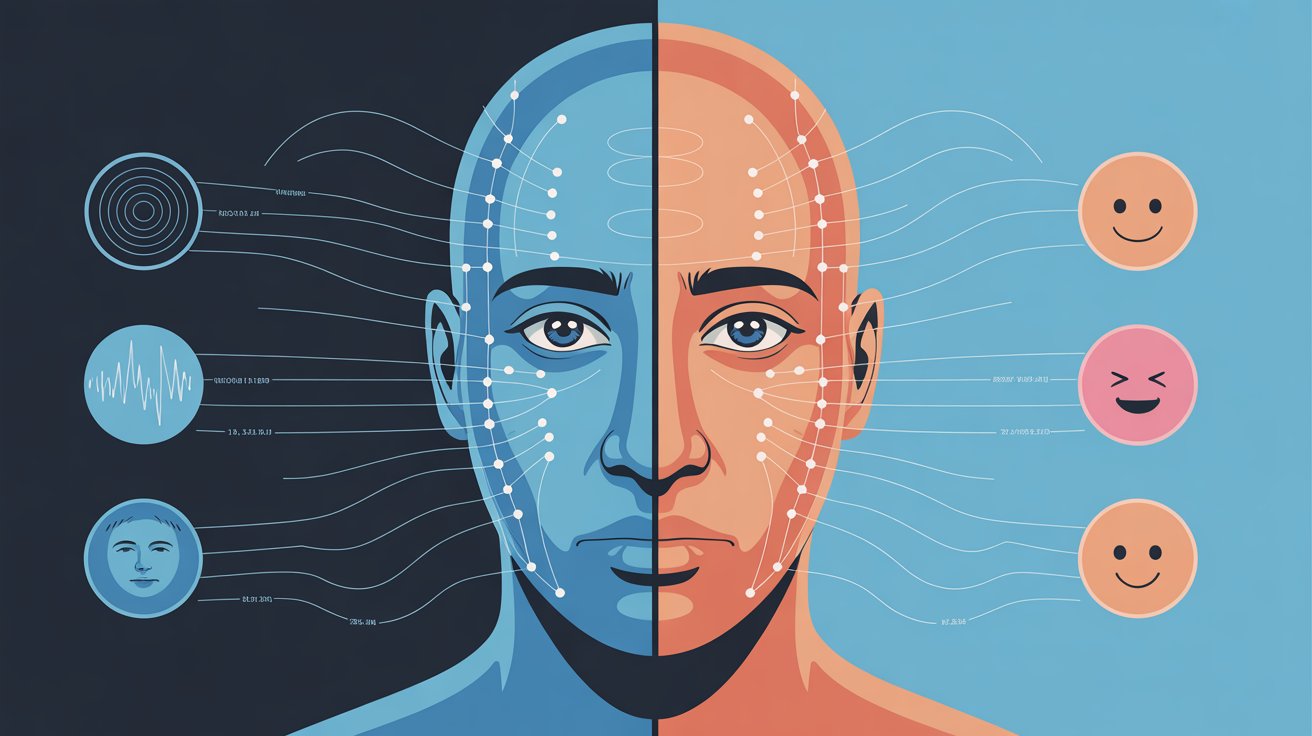
July 23, 2025
Emotion as Input: The Rise of Affective Computing and What It Means for Consent
Introduction
There was a time when clicking, scrolling, or typing were the only ways websites understood you. Now, they can listen to your voice tremble, track your heart rate spike, or detect a flicker in your expression. Welcome to the world of affective computing — where your emotions become inputs.
Once relegated to experimental labs, emotion-sensing technologies have quietly slipped into everyday platforms. From wearable devices that monitor stress levels to customer service bots that adjust tone based on vocal inflection, the goal is clear: understand and respond to human emotion in real time.
But there's a cost. When emotion becomes data, consent gets murky. Are users truly aware of what's being tracked? Are they in control of how their inner states are read and used? And at what point does emotional adaptation turn into emotional manipulation?
What Is Affective Computing?
Affective computing refers to systems that can detect, interpret, and respond to human emotions. It draws on various signals:
- Facial expressions (via webcams or phone cameras)
- Vocal tone and pitch (via microphones)
- Body language (via movement tracking)
- Physiological signals (like heart rate, skin conductance, or pupil dilation)
- Behavioral patterns (such as typing speed or erratic clicking)
These inputs are interpreted using AI models trained on massive datasets to correlate signals with emotional states like joy, anger, stress, or sadness.
The result? Interfaces that adapt in real time — changing music, dimming lights, suggesting calming content, or even escalating a chatbot to a live agent if distress is detected.
Emotion as the New Click
If the 2010s were about behavioral data, the 2020s are about affective data. And just like clicks, emotions are now measurable, analyzable — and monetizable.
- E-commerce: Sites can track when you show excitement or hesitation about a product, then adjust prices or recommendations accordingly.
- Ads: Emotion-detection software fine-tunes ads based on micro-reactions to increase impact.
- UX personalization: Platforms adapt layout, content, or tone in response to your mood.
- Wearables: Devices alert users to stress — or sell that data to third parties.
This shift turns emotion into a signal of intent, letting platforms predict what users are likely to do — or feel — next. But prediction invites influence. Influence invites coercion.
Where Consent Breaks Down
Consent in digital environments has long been flawed — reduced to checkbox terms few people read. But with emotion tracking, the stakes are higher. Why?
Because:
- Emotion is involuntary: You can’t help feeling — or always hide what you feel.
- Signals are captured passively: A raised eyebrow or stammer might be enough to trigger a response.
- Users often don’t know it’s happening: There's no visible prompt for affective tracking like there is for cookies.
- Emotions are easy to misinterpret: AI might read sarcasm as anger, or nervousness as guilt.
When systems respond to signals we didn’t knowingly give, consent ceases to be informed.
Emotional Manipulation vs. Emotional Support
Supportive uses of emotion AI exist:
- Detecting student frustration during online learning
- Alerting users to signs of burnout
- Smoothing customer service interactions
But even these can tip into manipulation:
- Nudging users toward purchases when they're most emotionally vulnerable
- Withholding information when stress is detected
- Adjusting messages to evoke urgency or fear
The core question: Is the tech responding to your needs, or exploiting your state?
The Illusion of Real-Time Empathy
Some platforms boast emotionally intelligent chatbots or responsive UIs that "understand" you. But emotional understanding is not the same as ethical care.
These systems:
- Simulate concern without true empathy
- Use your inner states to shape behavior
- Can escalate feedback loops (e.g., stress detected, calming content shown, but stress still logged and commodified)
And when the simulation is convincing, users may over-trust the system — sharing more than they should, or deferring judgment to a tool that can’t feel.
Who Owns Your Emotional Data?
Biometric privacy laws lag far behind affective tech. In many cases:
- Users don’t own emotional outputs from their wearables or apps.
- Third parties can access aggregated or anonymized mood data.
- Data brokers classify individuals based on emotional responsiveness.
- Platforms may optimize engagement using this emotional metadata.
What’s at stake isn’t just privacy — it’s emotional sovereignty.
Designing for Informed Emotional Consent
We can’t stop emotion AI — but we can regulate how it's used. That begins with consent that understands emotion:
1. Explicit Emotional Tracking Disclosures
- Show users exactly what emotional signals are being tracked.
- Visual indicators when affective sensing is active.
2. Granular Opt-In Controls
- Let users selectively allow or block emotion-based adaptation.
- Allow toggling on/off for features like facial tracking or heart rate inference.
3. Right to Explanation
- Explain how a user's mood influenced platform responses.
4. Right to Forget Emotional Data
- Offer deletion of affective history logs.
5. Bias Audits
- Regularly test for misread signals across different populations.
Conclusion
Emotion is the next frontier of data. It’s powerful, personal, and — once captured — easy to misuse.
Affective computing offers potential for support and personalization, but without clear consent frameworks, it risks becoming another tool of subtle coercion.
Until digital systems treat emotional input with the same dignity as emotional expression, the right to feel — without being fed back your feelings for profit — remains at risk.
Call to Action:
At Wyrloop, we stand for transparency, user control, and ethical innovation. If you believe emotion should never be weaponized, share this post — and let’s build platforms that feel with users, not at them.